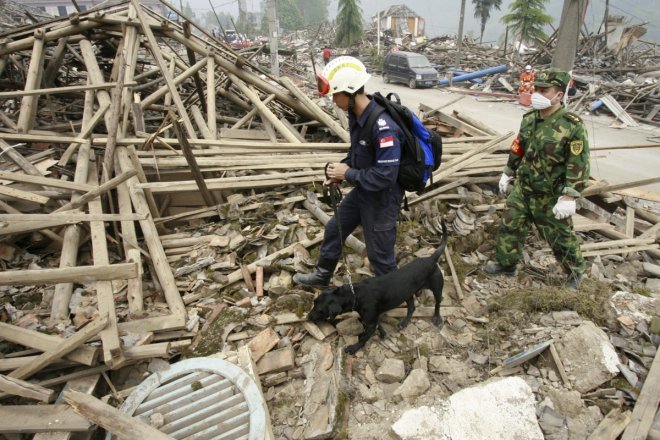
Researchers from the University of Cambridge, Los Alamos National Laboratory and Boston University have developed a machine learning algorithm which could predict the timing of an upcoming earthquake.
According to the report published in the journal Geophysical Review Letters, the newly developed technology could recognize hidden signals which precede an earthquake and could use it to predict an upcoming earthquake. The machine could also warn about avalanches, landslides, and similar disasters.
Prof. Colin Humphreys of Cambridge's Department of Materials Science and Metallurgy said, "This is the first time that machine learning has been used to analyse acoustic data to predict when an earthquake will occur, long before it does, so that plenty of warning time can be given – it's incredible what machine learning can do."
The research team studied interactions between earthquakes and precursor quakes, including the small earth movements, and faults in the earth crusts to develop the technology. A lab-based system has been developed which could mimic real earthquakes.
The laboratory apparatus which was built of steel blocks worked like a real earthquake scenario and made seismic signals and sounds and recorded it. Machine learning technique had been used to find relationships between signals from the faults and its proximity.
The machine learning algorithm has also identified the patterns in the sound which was detected as a precursor of the earthquakes. These sound patterns were used to give precise estimates of stress on the faults and the time of the earthquake occurrence.
However, the research to predict the epicenter of the earthquakes and its frequency and magnitude are still in progress. Scientists know that there are high chances for repetition of earthquakes in a region which has already experienced one. They believed that development of a technology which could give advanced warnings of location and magnitude of an earthquake is a necessity to control the havoc caused by them.
According to the report, Bertrand Rouet-Leduc, who started the research, stated, "We're at a point where huge advances in instrumentation, machine learning, faster computers and our ability to handle massive data sets could bring about huge advances in earthquake science."









